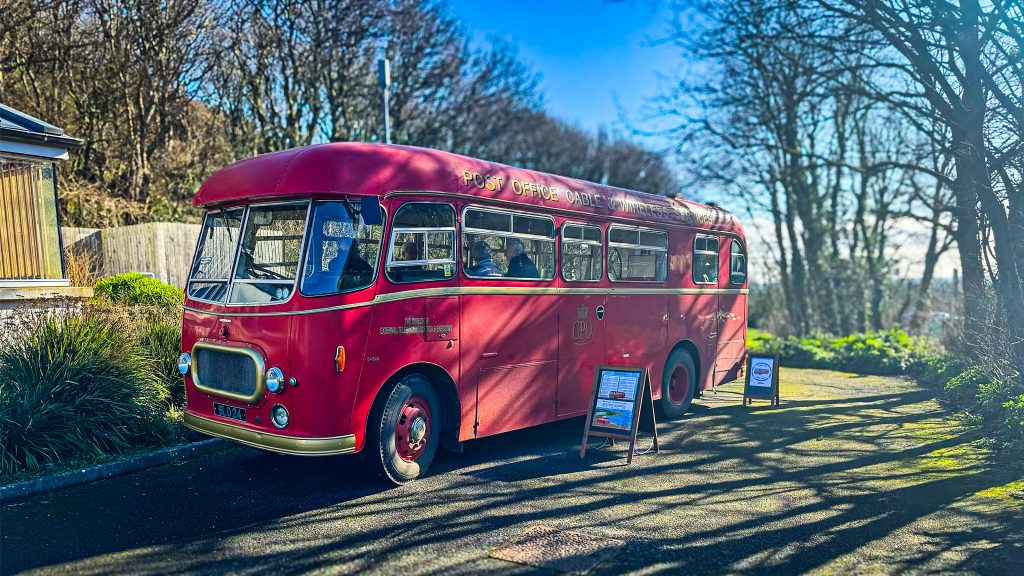Collections
Explore our world-class collection and discover the history of global communications and the people who made it happen. From the early days of the electric telegraph and undersea cables to the invention of wireless, satellite, fibre optics and beyond.

Our History
150 years ago, the first international telegraph cable was brought ashore at Porthcurno, connecting Britain to India and later other parts of the British Empire.

Our Archive
The museum’s enviable archive includes thousands of unique records from Porthcurno’s lasting communication legacy.

PK Online Collections (PKOC)
Explore our world-class collection! Discover the history of global communications and the people who made it happen.
PK 150 Connected Collections
The 2021 Citizen Curators project partnering Exeter University with students based globally at locations associated with telegraphy.

Poppy PK – The Little Red Bus

In 1956 a splash of colour arrived at the General Post Office in the shape of this bright red, 27-foot long, 6-ton purpose-built Mobile Telegraph Office, commissioned to provide pitch side cable and wireless services for instant reporting from sporting events.
Poppy (as she is affectionately known) was built by Harrington’s of Hove in East Sussex. She has an aluminium body with a 2-stroke Commer diesel engine on a Commer chassis.
Known then as ‘The Mobile’, she provided fast teleprinter and facsimile links to the General Post Office’s Headquarters in Electra House (London), enabling the eagerly awaited press coverage to be conveyed quickly around the world.
Poppy covered major sporting events, such as the international rugby tours, the Open Golf Championships, and the Australian and South African cricket tours. She was built on a narrow chassis specifically so that she could fit through the gates at Lord’s Cricket Ground.
Eight people would be operating the equipment inside Poppy and two engineers, one of whom would also be the driver. The two engineers would collect Poppy from the Wembley Depot, where she had her own allocated parking space, and drive her to the event. The local telephone exchange would then supply their employees to operate the equipment.
Poppy was fitted inside with Venetian blinds as she needed to be parked wherever there was a power supply, which could mean being in full sun for the whole day. It would therefore get rather hot for anyone working inside.
RESTORING POPPY PK
The General Post Office used the mobile telegraph office between 1956 and 1972. A seed merchant then used it before ending up in a field in Cambridgeshire.
The bus was found by a gentleman who recognised the memorable registration number SL024 (her current top speed is only 40 mph!) The windows had been boarded up with cardboard and it turned out that people were living inside. The little red bus had been their home for the past 5 years.
The gentleman persuaded them to sell it to him, took it back to his home in Yorkshire, and set about restoring the exterior. Unfortunately, he lost his storage space and regretfully had to sell her.
She was bought by Iris and Tony Leah in 1998 who continued her restoration. After 7 years of hard work, she was finally ready to use, and Iris and Tony began driving her to vintage rallies and steam shows across the UK.
In 2021, Iris and Tony were looking for a suitable home for Poppy and were put in touch with PK Porthcurno. Delighted with the opportunity to care for and display such a wonderful vehicle, the museum happily accepted their donation.
Poppy is now a key part of our outreach activities, enabling us to engage with audiences outside the museum walls. Touring local schools and events, Poppy is fast becoming a recognisable member of PK Porthcurno.

